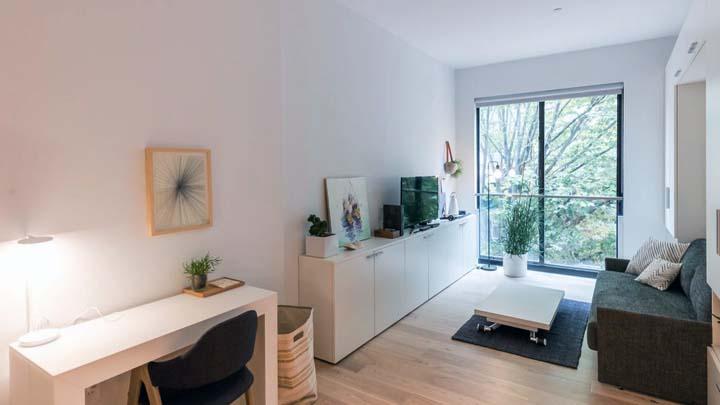Design Omnibus: Co-Live/Co-Work
As the post-crash-of-08 economic recovery continues to stimulate a freelance sub-economy, lifestyles have changed dramatically. With the best jobs in cities and metros with limited space for entry-level living, “co” is here to stay.
Whether it’s co-living, co-working, or even the most extreme version, nomadic living and working, 20-somethings, unwittingly the most Darwinian of humans to date, are adapting to—and inventing—ways of living that make couch surfing a distinctly third-world alternative.
Oftentimes landing, keeping, and moving up from a good job involves moving between different company locations. But finding decent short-term accommodations in metro rental markets is sketchy at best. Co-living set-ups have evolved from post-grad apartment shares to entrepreneurial models in which an individual with cash on hand buys a house or apartment to offer to carefully screened members. For many, this is a big step up from a cramped rental room lacking in amenities and social interaction, or a cold uncomfortable tiny house parked in a suburb.
Photo: Max Touhey courtesy Curbed
The co-living phenom has seen so many stable incarnations that a new type of apartment building, based on micro apartments whose monthly rent includes amenities that were formerly housed within, such as laundry, storage, bike racks etc., is now being tried out in New York, San Francisco, Seattle and other high-priced cities. NYC’s first high-design microplex, Carmel Place, looks like a success since its first tenants began moving in last spring. [Curbed]
Nomadic work habits based on cranking it out on the fly in airports, hotel lobbies or wherever have also fostered a strain of workers able to tune out distractions and grateful for every square inch of perch space available. Co-work spaces, starting with the ubiquitous—and free—Starbucks or Whole Foods café tables have become a viable model for workers of all ages and experience. New in the post-We-Work world are spaces built for the creative class by high-end designers seeking to bring together like-minded co-workers in stimulating environments furnished with everything from the obligatory conference room to the less obligatory work lab equipped with 3-D printers.

In September, New York’s largest and most hi-tech co-working site, New Lab, welcomed its first group of member-tenants in fields that include robotics, additive manufacturing, energy, life sciences, artificial intelligence, and more to its 84,000 square foot repurposed manufacturing plant in the Brooklyn Navy Yard. The public-private partnership behind this innovative development, one of the largest of its kind, is headed by real estate developer David Belt with artist and entrepreneur Scott Cohen.
According to a recent report in Curbed, New Lab's layout takes advantage of its size, offering opportunities for solo work, collaboration, and old-fashioned hanging out in an effort to facilitate communication and build relationships among the tenants. The first floor is large and open and includes an event space as well as a kitchen; along the perimeter are conference rooms, also walled off with glass and metal partitions. The ground floor's primary thoroughfare is dotted with cubicles, their walls clad in brightly colored fabric for noise abatement….And there are plenty of tools dispersed throughout for tenants to use: among them a range of 3D printers, from small-scale consumer models to large SLS machines, as well as a laser cutter and a sophisticated spray room that allows for safe and high-quality finishing. [More]
Also in New York, and designed to accommodate interior designers, is Fuigo (above), a place envisioned by its founders, the owners of the legendary Fortuny textile company, to bring young designers into contact with industry veterans in a collaborative, beautifully designed setting. By offering a Park Avenue address, an impressive physical space to bring clients, a resource library that is constantly updated, the owners offer amenities that would not be available in a generic space—including a business management tech platform.
Fuigo expects to bring in 30 interior designers this year,in addition to their own staff of 12 in a 18,000-square-foot space that includes private offices, open workspaces, phone booths and storage areas. [More]
And it comes as no surprise that Soho House founder Nick Jones has launched co-work spaces for its members, in London and Los Angeles—and is looking into co-living spaces for its global community. [More] Photo above courtesy Soho House








